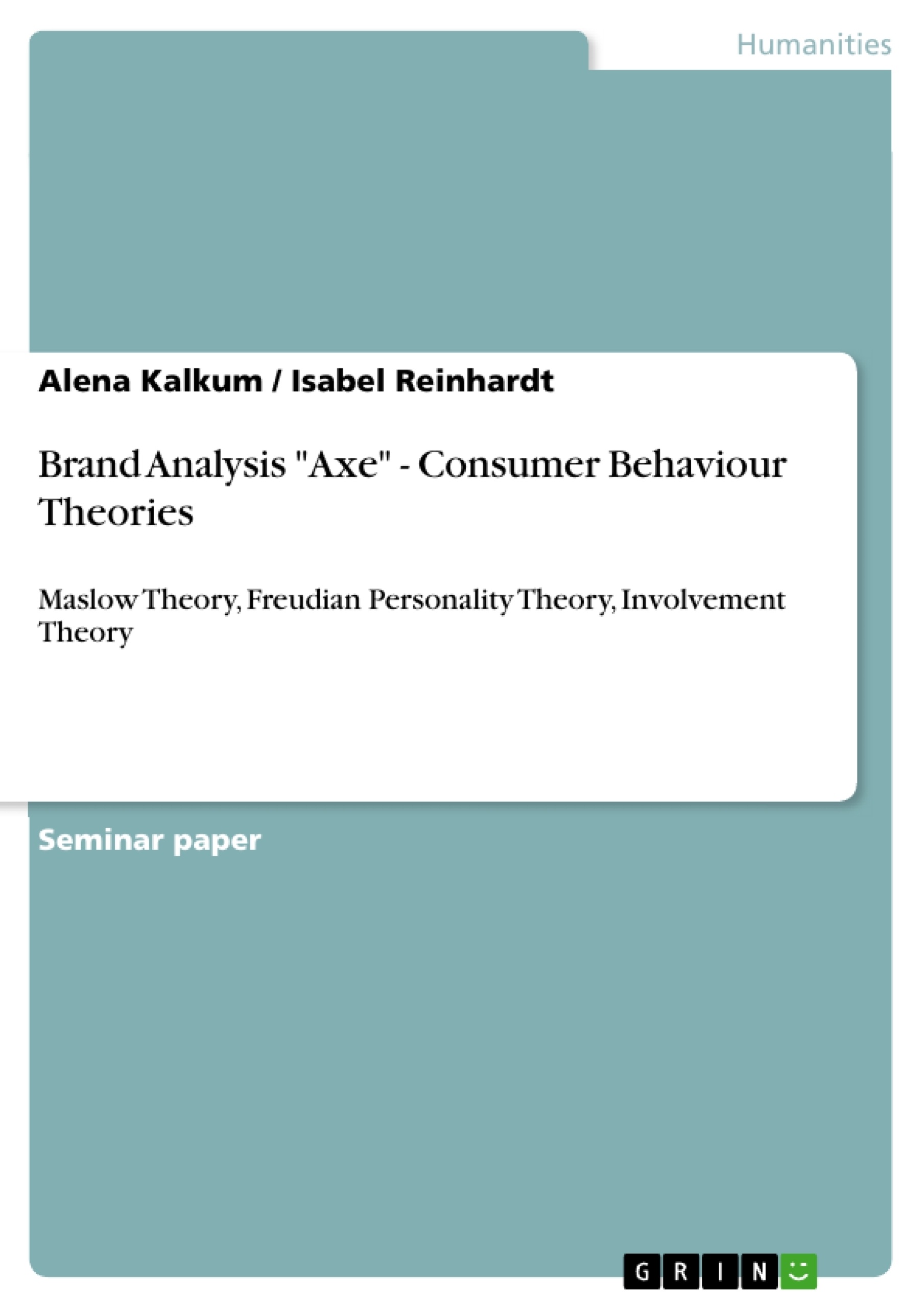Table of contents
Brand Overview
Survey Target Group
Maslow Theory
Freudian Personality Theory
Involvement Theory
Conclusion
References
Internet Sources
Enlargement Range
Inhaltsverzeichnis (Table of Contents)
- 1 Brand Overview
- 2 Survey Target Group
- 3 Maslow Theory
- 4 Freudian Personality Theory
- 5 Involvement Theory
- 6 Conclusion
Zielsetzung und Themenschwerpunkte (Objectives and Key Themes)
This analysis aims to understand the Axe/Lynx brand, its target market, and the marketing strategies employed. It examines how the brand utilizes psychological theories (Maslow, Freud) and consumer involvement theory to shape its messaging and product development. The study also explores the effectiveness of Axe/Lynx's advertising campaigns.
- Axe/Lynx Brand Overview and History
- Target Market Analysis and Consumer Behavior
- Application of Psychological Theories in Marketing
- Effectiveness of Axe/Lynx Advertising Campaigns
- Evolution of Product Line and Marketing Strategies
Zusammenfassung der Kapitel (Chapter Summaries)
1 Brand Overview: This chapter provides a comprehensive introduction to the Axe/Lynx brand, detailing its ownership by Unilever, its global presence (excluding the UK, South Africa, New Zealand, Ireland and Australia where it is known as Lynx due to trademark issues), and its product evolution from its 1983 French launch. It traces the brand's history, highlighting changes in fragrance naming conventions and the expansion of its product line to include body sprays, aftershave, shampoo, skincare, shower gels, and hair care products. The chapter also discusses failed product extensions such as underwear and razors, and notes the significant success of the US launch in 2002, which not only dominated the male deodorant market but also influenced competitors to adopt similar product forms and emotional marketing approaches.
2 Survey Target Group: This chapter presents data from a survey conducted on May 9th, 2012, in Newcastle, UK, focusing on the motivations of 12-30-year-old men regarding deodorant use. The findings, derived from a sample size of 26 participants, reveal the primary reasons for deodorant usage, with a strong emphasis on odor removal (64%), followed by less prominent factors such as sophistication, freshness, and other motivations (all at 16% or less).
Schlüsselwörter (Keywords)
Axe, Lynx, Unilever, Male Grooming Products, Deodorant, Body Spray, Marketing, Advertising Campaigns, Consumer Behavior, Maslow's Hierarchy of Needs, Freudian Psychology, Involvement Theory, Brand Personality, Target Market, Emotional Marketing, Product Line Expansion.
Axe/Lynx Brand Analysis: Frequently Asked Questions
What is this document about?
This document provides a comprehensive preview of an analysis of the Axe/Lynx brand. It includes a table of contents, objectives and key themes, chapter summaries, and keywords. The analysis explores the brand's target market, marketing strategies, and the application of psychological theories (Maslow, Freud, and Involvement Theory) in its advertising and product development.
What are the main objectives of the analysis?
The analysis aims to understand the Axe/Lynx brand, its target market, and its marketing strategies. It examines how psychological theories are utilized to shape messaging and product development, and assesses the effectiveness of its advertising campaigns. Key areas include the brand overview, target market analysis, application of psychological theories, effectiveness of advertising, and the evolution of its product line and marketing strategies.
What topics are covered in each chapter?
Chapter 1 (Brand Overview): Introduces the Axe/Lynx brand, its ownership (Unilever), global presence (excluding some regions where it's known as Lynx), history, product evolution, and significant milestones like the successful US launch. It also discusses failed product extensions.
Chapter 2 (Survey Target Group): Presents data from a 2012 survey of 12-30-year-old men in Newcastle, UK, on their motivations for deodorant use. The findings highlight odor removal as the primary reason.
What are the key psychological theories discussed?
The analysis applies Maslow's Hierarchy of Needs, Freudian Psychology, and Involvement Theory to understand the brand's marketing and consumer behavior.
What is the target market of Axe/Lynx?
The primary target market is men aged 12-30 years old, as evidenced by the survey conducted in Newcastle, UK. The analysis explores the motivations and behaviors of this demographic group.
What are the key marketing strategies employed by Axe/Lynx?
The analysis explores the brand's advertising campaigns and the use of emotional marketing approaches to connect with its target market. It also examines the evolution of the product line and overall marketing strategies.
What are some key findings of the analysis?
The analysis reveals the importance of odor removal as the primary driver for deodorant use among the surveyed men. It also highlights the success of Axe/Lynx's US launch and its impact on the male deodorant market.
What are the keywords associated with this analysis?
Axe, Lynx, Unilever, Male Grooming Products, Deodorant, Body Spray, Marketing, Advertising Campaigns, Consumer Behavior, Maslow's Hierarchy of Needs, Freudian Psychology, Involvement Theory, Brand Personality, Target Market, Emotional Marketing, Product Line Expansion.
- Quote paper
- Alena Kalkum (Author), Isabel Reinhardt (Author), 2012, Brand Analysis "Axe" - Consumer Behaviour Theories, Munich, GRIN Verlag, https://www.grin.com/document/210138




